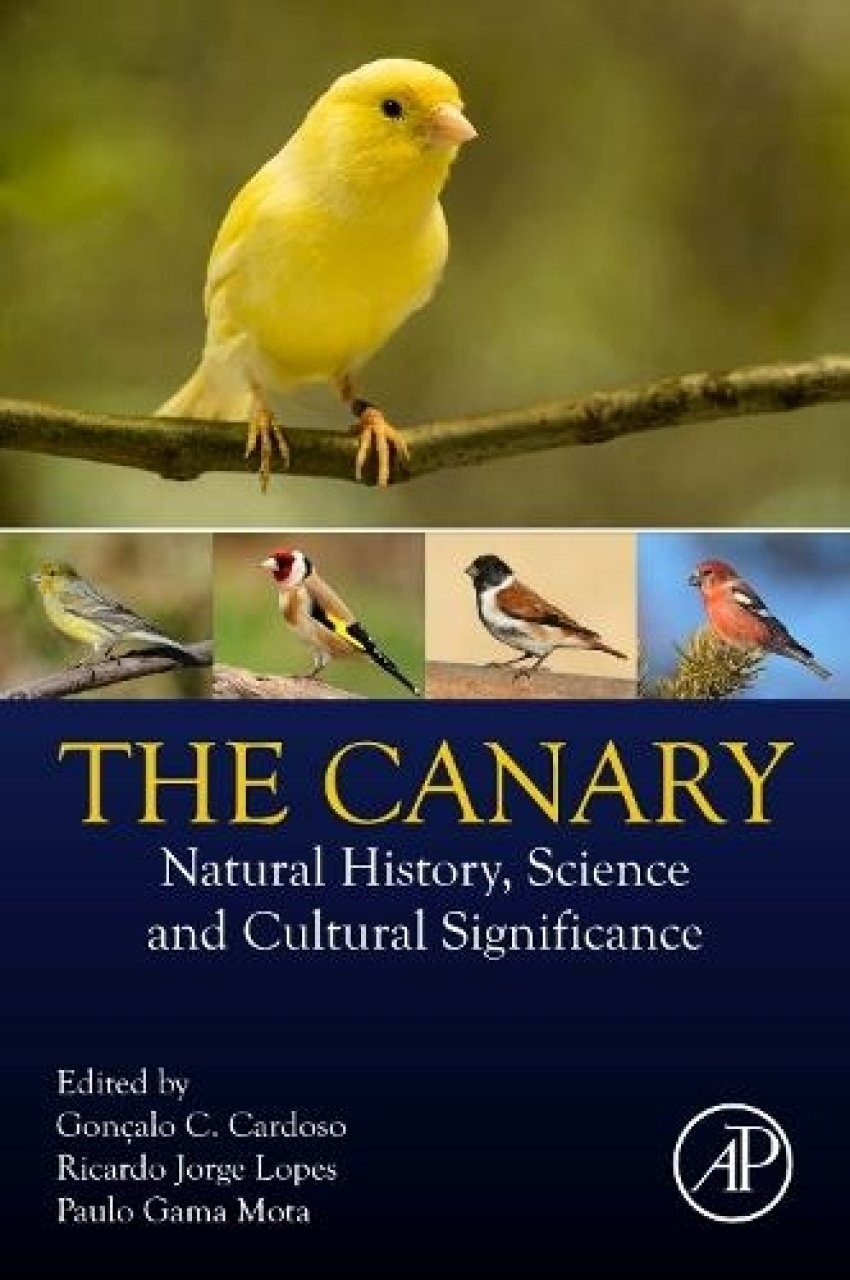| Authors | Goncalo C. Cardoso, Ricardo Jorge Lopes & Paulo Gama Mota |
| Language | English |
| ISBN | 9780443153501 |
| Publisher | Academic Press |
| Pages | 308 |
| Size | 229 x 152 (mm) |
| Format | Paperback |
| Images | - |
| Year published | 2023 |
The Canary: Natural History, Science and Cultural Significance covers the ecology, evolution, and conservation of the canary and related species, the history and cultural significance of the domestic canary worldwide, and the various scientific disciplines in which canaries have played a key role as a model species. This book synthesizes the multiple ways in which the canary and its relatives have been, and continue to be, an important scientific model in diverse areas and have influenced human culture.
Each chapter is written by international experts in areas such as biogeography, animal behaviour, evolutionary ecology, conservation, neurobiology, genetics, or ethnology, and all are actively researching the canary or closely related species. In covering this eclectic array of topics, while always focusing on the canary and its close relatives, this book uses the immense appeal of the canary as a vehicle to present notions of ecology, evolution, biodiversity conservation, and so on, to a wide audience.
The Canary: Natural History, Science and Cultural Significance is a vital resource for ornithologists, conservationists, and biodiversity researchers and practitioners.
Contents
Part I: From the wild to a cage
1. Macaronesian birds and the natural environment of the canary
2. The wild canary - ecology and behavior in the Atlantic
3. Canary domestication and cultural significance
Part II: The canary and its relatives
4. The family tree and biogeographic history of canary relatives
5. Ecology and conservation of the world's canaries
6. Lessons from the ecology and evolution of crossbills
7. Evolution of song and coloration across canary relatives
Part III: A model for science
8. What the canary can tell us about singing and the brain
9. Eggs, hormones, and breeding
10. Canary domestication as a model for genomics research
Part I: From the wild to a cage
1. Macaronesian birds and the natural environment of the canary
2. The wild canary - ecology and behavior in the Atlantic
3. Canary domestication and cultural significance
Part II: The canary and its relatives
4. The family tree and biogeographic history of canary relatives
5. Ecology and conservation of the world's canaries
6. Lessons from the ecology and evolution of crossbills
7. Evolution of song and coloration across canary relatives
Part III: A model for science
8. What the canary can tell us about singing and the brain
9. Eggs, hormones, and breeding
10. Canary domestication as a model for genomics research











